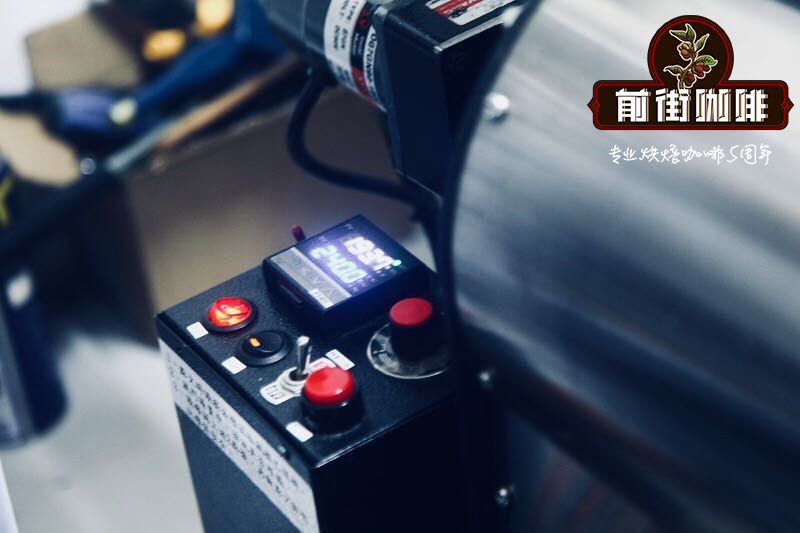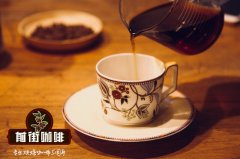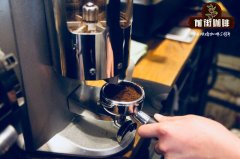The principle of the coffee roaster, what is the basic structure of the coffee roaster?

Professional coffee knowledge exchange more coffee bean information please follow the coffee workshop (Wechat official account cafe_style)
The purpose of coffee roasting should be to find out the coffee beans with different treatments in different regions, which belong to its most appropriate [roasting degree].
Although roasting is the process of heating and scorching raw coffee beans, the real goal should be to create its own baking degree according to the different characteristics of raw beans and guide it to exude a unique flavor.
What kind of ascent curve should be used? Stop baking at the right time to give different coffee beans the best quality. And the tool used to roast coffee beans is the roaster!
Generally speaking, the roaster can be divided into direct fire type. "hot air type" and "semi-hot air type"
Most people see that the volume of the roaster for business is very huge, and it is even more difficult to understand the internal structure and principle.
The main heat source is at the bottom of the drum, which is continuously heated after pouring into the raw beans. The heat source is brought out from the exhaust hole on the left to form a moving line. When the coffee beans are roasted, they are poured into the cooling tank to cool down.
On the surface, the coffee roaster seems to be very complicated, but in fact, the structure is relatively simple. The roaster is composed of raw bean holder, drum, dust collector, dust collector, cooling tank and so on. The whole baking process of raw beans turning into ripe beans is mainly controlled by control panel, adjusting turntable, sampling spoon, baking / cooling switch and so on. Of course, good or bad roasting requires some experience and skills. This only belongs to the category of human level experience. Here we only focus on the main parts of the coffee roaster to explore its function.
Air valve:
The main functions of the gas valve are as follows: the exhaust function of waste such as smoke and broken layers, providing the necessary oxygen during bean combustion, and adjusting the heat in the drum. Basically, the air valve mainly has the function of "the temperature of the drum rises when it is opened and decreases when it is closed". After putting the raw beans, immediately enter the "steaming mode" (need to close the gas valve) to homogenize the beans, which is also one of the important functions of the gas valve.
The air valve has exhaust and cooling sharing type, and the two separate types. The shared type requires a "baking / cooling switch" to control the baking of raw beans and the cooling of cooked beans out of the tube.
Roller:
The drum structure of direct fire type and semi-hot air type is very different, but the basic condition is that the stirring blade which can bake beans evenly is also suitable for rotating speed. If you put as many raw beans as the capacity of the roaster, it will cause uneven baking and difficult exhaust. Most of the causes come from the structure of stirring blades. The roaster pushes the beans to the front of the drum according to the centrifugal force generated during rotation, so that the beans are fixed in a ball. In general, it is best to bake up to 80% of the beans.
Smoke exhaust equipment:
Raw beans in baking produce quite a lot of dust, broken layers, and silver skins, and dust collectors are the machines that collect these things. There is a horizontal pipe connection between it and the roaster, and then to the chimney outside the house. The curved part of the chimney will cause turbulence, so it is installed in a straight line as far as possible, so that the chimney extends to a considerable height. The chimney is not just a simple exhaust outlet, it is also its job to extract the air accumulated in the dust collector.
Cooling device:
If the beans are not cooled immediately after baking, the beans will continue to bake with their own waste heat, which will make the taste more bitter.
Firepower device:
The temperature of the roaster is controlled according to the firepower of the burner and the multiple adjustment of the gas valve. The firepower setting end depends on the gas pressure gauge, and the micro-adjustment depends on the gas valve.
Important Notice :
前街咖啡 FrontStreet Coffee has moved to new addredd:
FrontStreet Coffee Address: 315,Donghua East Road,GuangZhou
Tel:020 38364473
- Prev

Introduction of Coffee Bean Variety-Kaduai Shengdou
Professional coffee knowledge exchange more coffee bean information please pay attention to the coffee workshop (Wechat official account cafe_style) Kaduai raw beans are relatively soft, sweet and sweet, sour less, as if everything is only 65 points, this is a variety vigorously promoted in Brazil, there is not much success at present. Kaduai is also an Arabica hybrid, and it is Mundo Novo Mondonovu (Pliocene)
- Next

What are the factors that affect espresso? How would you like your espresso?
Professional coffee knowledge exchange more coffee bean information Please pay attention to the coffee workshop (Wechat official account cafe_style) the taste of espresso mainly depends on coffee concentrate, so coffee concentrate occupies a very important position. The taste of coffee is affected by the amount of powder, degree of grinding, amount of extraction, extraction time and temperature. Powder quantity: according to the characteristics of coffee beans, choose the right powder.
Related
- Beginners will see the "Coffee pull flower" guide!
- What is the difference between ice blog purified milk and ordinary milk coffee?
- Why is the Philippines the largest producer of crops in Liberia?
- For coffee extraction, should the fine powder be retained?
- How does extracted espresso fill pressed powder? How much strength does it take to press the powder?
- How to make jasmine cold extract coffee? Is the jasmine + latte good?
- Will this little toy really make the coffee taste better? How does Lily Drip affect coffee extraction?
- Will the action of slapping the filter cup also affect coffee extraction?
- What's the difference between powder-to-water ratio and powder-to-liquid ratio?
- What is the Ethiopian local species? What does it have to do with Heirloom native species?

